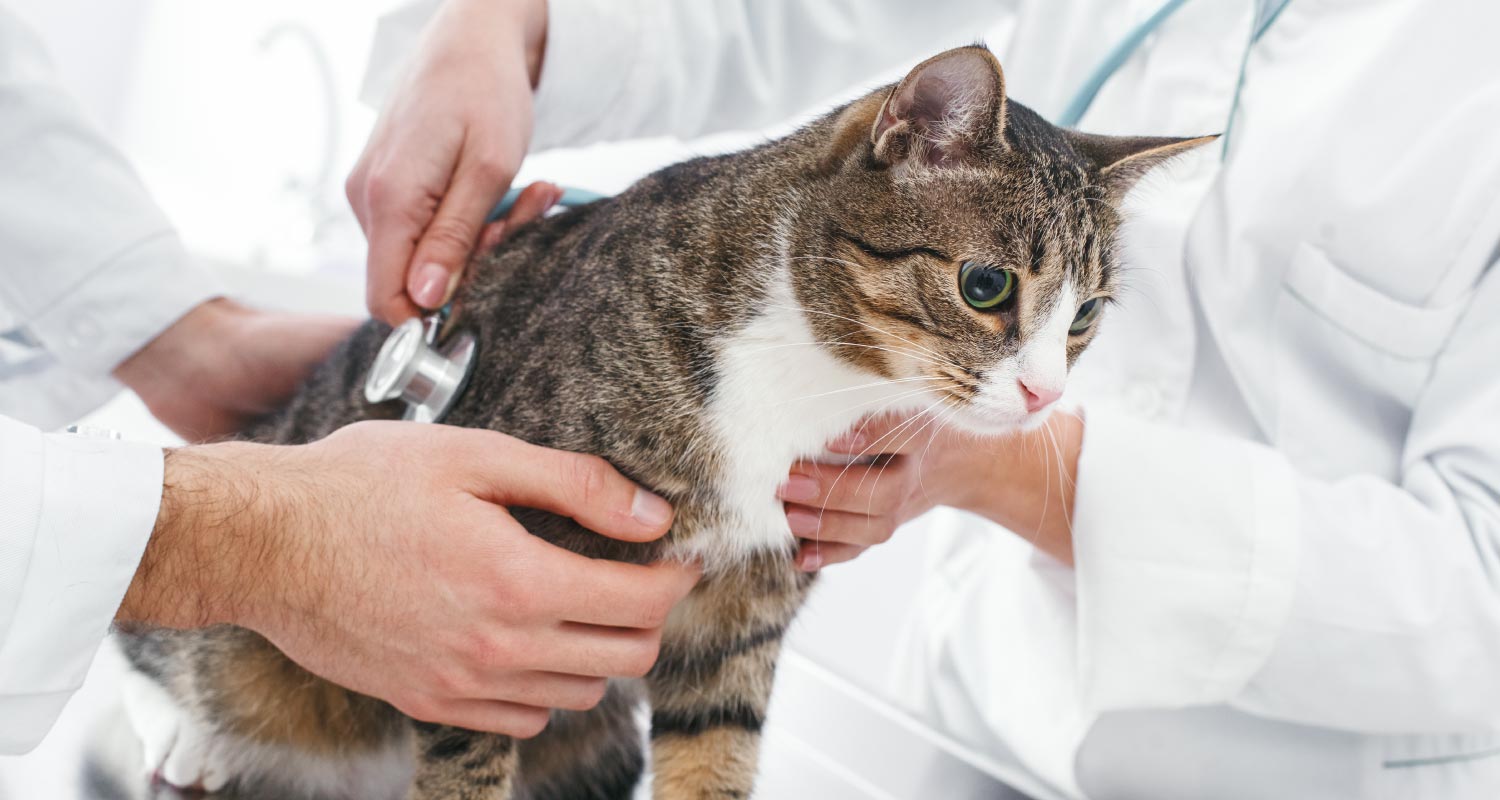HEALTH & WELLNESS

TRENDING

SIGN UP and Start Receiving
Our Monthly Newsletter,
The Chronicles
Chronic Kidney Disease in Cats – About the Disease

Definition of Chronic Kidney Disease (CKD)
CHRONIC KIDNEY DISEASE (CKD) IS DEFINED AS THE PRESENCE OF FUNCTIONAL AND/OR STRUCTURAL ABNORMALITIES OF THE KIDNEYS THAT PERSIST FOR MORE THAN 3 MONTHS*.
The disease is progressive over time and occurs where there is long-standing, irreversible damage to the kidneys that weakens their ability to remove waste products from the blood and regulate other essential functions.
CKD affects approximately 35% of geriatric cats and up to 10% of cats that visit veterinary clinics.
*It’s rare to discover structural or functional causes of kidney disease in early stages in cats because the initial diagnosis is normally only made in advanced stages of the disease.
HIGHLY COMPLEX KIDNEYS ARE ESSENTIAL FOR BODILY FUNCTIONS
The kidney is a remarkable organ that provides the following vital functions:
- Filtering waste products and extra water from the blood so that they can be excreted in the urine. This process eliminates toxins from the body and maintains a proper level of hydration.
- Regulating electrolytes (such as sodium, potassium, phosphorous, and calcium) in the body.
- Producing and concentrating urine, which is made up of waste, toxins, and extra fluid that the body doesn’t need.
- Producing erythropoietin, a hormone that stimulates the bone marrow to create new red blood cells. Red blood cells carry oxygen throughout the body.
- Producing renin, an enzyme that controls the body’s blood pressure.
MOST CKD CASES ARE IDIOPATHIC
Most cases of CKD have an unknown underlying cause (idiopathic); however, some conditions have been recognized as causes. These include:
- Kidney stones: Disease, genes or bacterial infection can cause kidney stones to form
- Kidney blockage: Pieces of kidney stones that have fractured or splintered can cause partial or complete blockage in the urine-carrying tube (ureter) that connects kidneys to the bladder
- Kidney tumors: Cancer, for example lymphoma (solid tumor of white blood cells) can affect the kidneys
- Infections: Bacterial infection of the kidneys may lead to sufficient damage to cause CKD
- Toxins: Antifreeze is a toxin that gets lots of attention, but there are many things in and around the house that are dangerous when ingested; for example, true lilies (all parts and even the water it’s in) and various medications (common over-the-counter and prescribed meds)
- Glomerular disease: This refers to inflammation of the glomeruli (individual units within the kidneys that filter the blood). When they are inflamed over a period of time, this can lead to CKD. Infections such as FIP/FeLV or cancer can cause the kidneys’ filtration mechanism (glomerulus) to become inflamed which causes damage that ultimately leads to CKD
- Protein problem: Amyloidosis, caused by chronic inflammation in other body parts, is a disease that can affect kidney function; normal tissue is replaced with protein deposits that can’t be cleared and tissue that suffered damage can’t be replaced
- Familial kidney disease: ‘Fancy’ cat breeds, seen mainly in Persian and related cats, have been found to suffer from irreversible hereditary diseases such as amyloidosis and polycystic kidney disease (fluid-filled cysts)
- Tubulointerstitial disease: This disease – that damages kidney tubules and causes inflammation – is difficult and dangerous to test for and because the cause is often unknown, custom treatment is rarely possible
Other conditions such as birth defects affecting the kidneys and trauma may also cause CKD. Age and lack of proper nutrition and bad food choices can be contributing factors.
In most cases, causes cannot be identified so treatment is aimed at management of the disease and complications that arise from it.
CLINICAL SIGNS OF CKD
Signs of CKD can take months or years to manifest. These may include:
- Loss of appetite
- Weight loss
- Drinking and urinating more than usual
- Dehydration
- Lack of grooming
- Dull and/or matted coat
- Dull eyes
- Sleeping more than normal
- Weakness and bad breath
- Intermittent vomiting and constipation may also occur
Some of these symptoms can of course be attributed to other diseases, so rather speak to your veterinarian and have your cat tested before jumping to conclusions.
DIAGNOSING CKD
Blood and urine tests can help diagnose CKD based on elevated levels of certain components in these fluids. Blood pressure is typically checked too. Clinical signs should be taken into consideration as well, including poor body condition / evidence of muscle wastage, small/asymmetrical kidneys and enlarged bladder.
TREATMENTS VARY
Your veterinarian will base the treatment of CKD on the test results whether they be blood tests or other biological indicators. A treatment protocol will be established that may include medications aimed at resolving specific abnormalities. A diet change including supplementation may also be recommended. With proper monitoring and treatment, your cat may have several years of good quality of life.
MANAGEMENT CHALLENGES
- Fluid Intake: Dehydration needs to be avoided. Talk to your vet about your plan of action.
- Food: Quality, balanced cat food can be pricey, but the long-term benefits are usually significant.
- Diet: Healthy cats typically require high amounts of protein, moderate amounts of fat and a minimal amount of carbohydrates. They also need other nutrients such as vitamins, minerals, fatty acids and amino acids. In cats with CKD, the ratios of nutrients usually need to be adapted.
- Toxins: You can’t follow a cat 24/7, especially if it enjoys exploring, so exposure to toxins is a big risk. Some household products or even natural organisms, such as lilies, can be dangerous.










